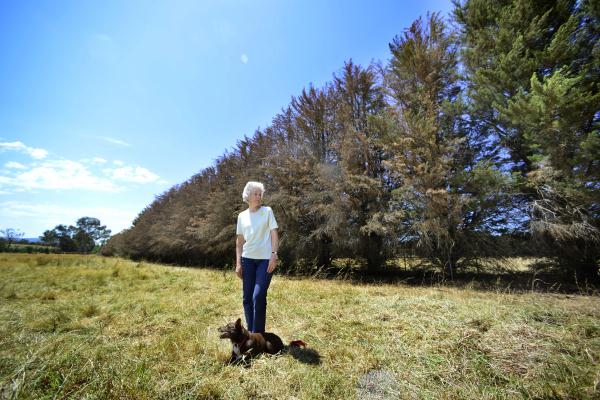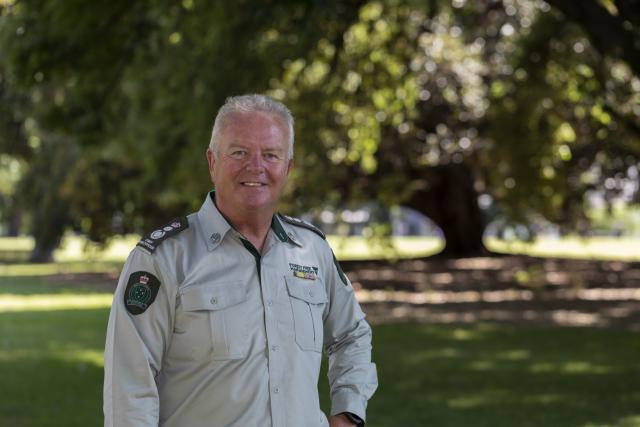By KATH GANNAWAY
FARM windbreaks across the Yarra Valley are taking a battering as the drought puts new and established plantings under stress.
But a nurseryman who has provided trees for shelterbelts and domestic hedges for years says farmers have to bite the bullet and give over-crowded trees the chop.
Dixons Creek beef producer Lyn Mullens said whole sections of recent cypress plantings are now dead after being affected by the spread of cypress canker.
She said the effect of the disease, which is an incurable windborne fungal disease, can be seen in hedges and farm shelterbelts throughout the valley, but she has been told it is a state-wide problem.
Mrs Mullens lost her home, farm sheds and trees on Black Saturday and said it was heartbreaking now to see trees that survived on her property, and on others, now dying.
“Thousands of shelter belts on farms and screening hedges on private properties are being changed daily forever,” she said looking at a photo of healthy trees taken in October which are now dead or dying.
Leo Koelwyn from Coolwyn Nurseries in Monbulk said cypress and other trees were certainly under stress due to a lack of water, but said the problem was more complex, and required some drastic action in many cases to ensure that the condition that allowed disease, including cypress canker, to take hold were eradicated.
“The canker is there, and it’s alive and well because people are providing a palate for it,” he said
He said while plants in hedges in ‘domestic’ situations were often planted close together they were more likely to be trimmed, watered and fertilised, which increased their chances of remaining healthy.
“Windbreaks are different,” he said.
“People will plant, say, four metres apart, often less because they want a closer screen, but in my experience they will never water or fertilise those trees again, and that’s the problem.”
The problem for many farmers is that the very time water is in short supply is when the trees are also thirsty.
Mr Koelwyn said a lot of windbreaks have also been around for anything from 50 to 80 years and have a particular lifespan.
“If they are then large trees competing with each other, and having come through the ’90s through a long drought and now dealing with a situation where we have drought conditions again it’s a very big demand on them,” Mr Koelwyn said.
He said the problem with disease and stress could equally apply to gum trees that are maturing if they are not watered when they need it.
“They may last 30 or 40 years, but then they will start to complain,” he said.
He said culling trees was the answer, but not a popular solution with many landowners.
“When you have trees that are competing with each other too strongly my answer is go through and take out every second tree,” he said.
“Farmers are loath to do that, they paid for the trees and they don’t want to cut them down, but it has to be seen in the context of good husbandry, if all of a sudden there is not enough tucker, you have to apply the same plant husbandry that you apply to animal husbandry and reduce the stock,” he said.







